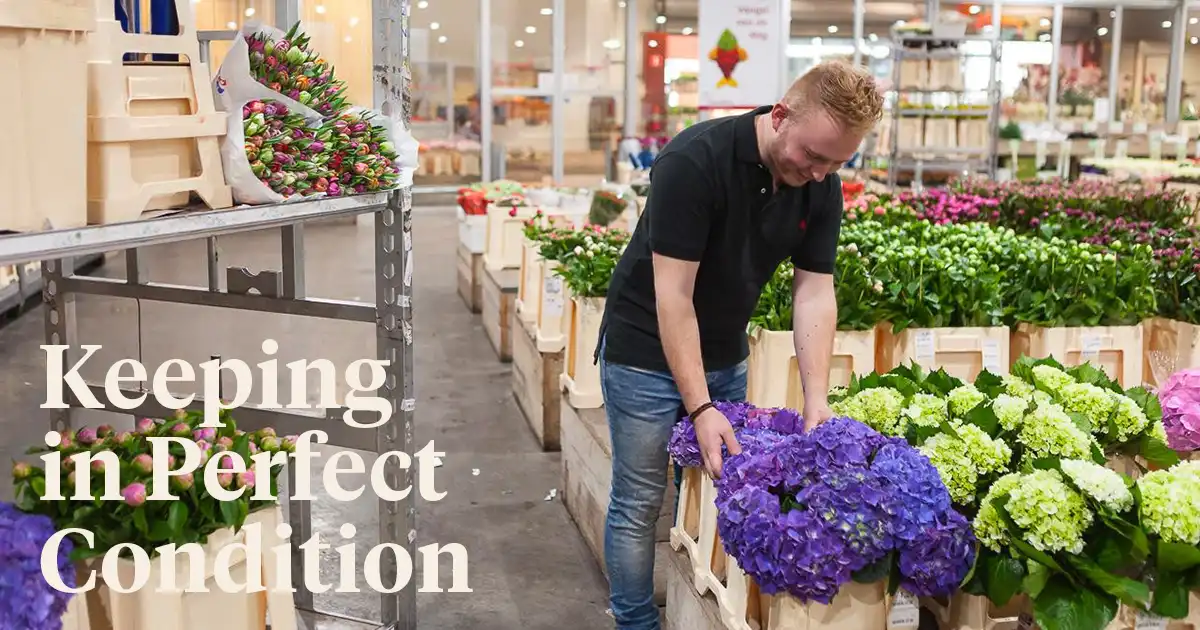Do all cut flowers really need to be kept cold when they are stocked? Are they only allowed to be moved out into the open when they are bought by the end consumer? To cool or not to cool. That is the question for everyone in every piece of the floral chain. The goal: optimal conditions for optimal shelf life and vase life.
Cut flowers have quite a road ahead of them when they are harvested at the growers'. After a selection, they will be put in water buckets or boxes with or without water tubes and sent to their next stop, the flower auction, or straight to the wholesaler. From the wholesaler to the cash & carry, retailer or florist where the flowers must be in perfect condition to be enjoyed for at least eight days in a vase somewhere in a home, office, hotel lobby, or who-knows-where.
Cold Storage
But flowers have one nasty habit: they bloom. Especially when they are kept at a cozy room temperature. For some flowers, a bit ripe is no problem at all, but they can't be too ripe. Flowers that are 'over the top' lose their value quickly. Therefore, it is important for everyone in the floral chain to prevent flowers from ripening too far.
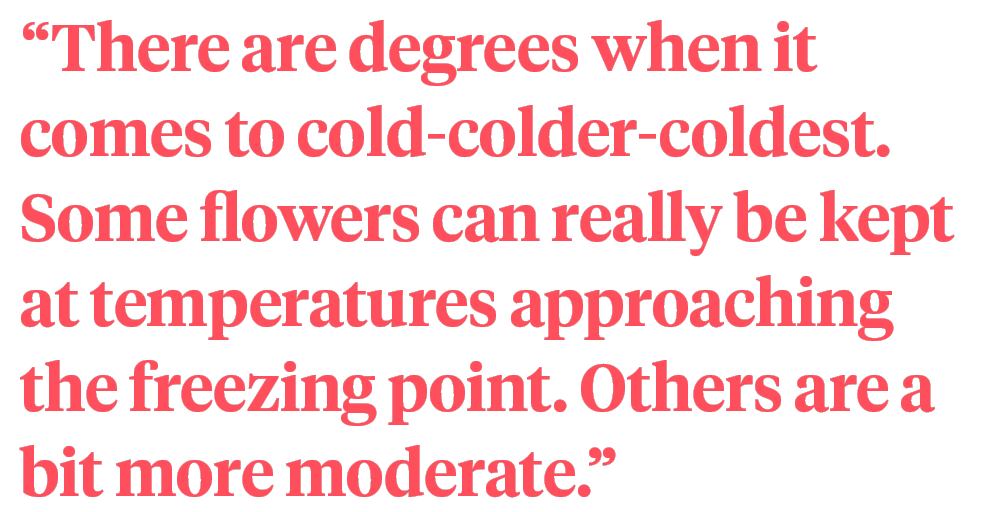
Fortunately, somebody invented cold storage. It's expensive, especially during an energy crisis, but if done properly it will pay off against the profit of the cut flower sales and the savings of flowers that are not wasted.
Flowers are placed in cold storage to slow down the ripening process and extend their shelf life. This helps to keep the flowers fresh and vibrant for a longer period of time.
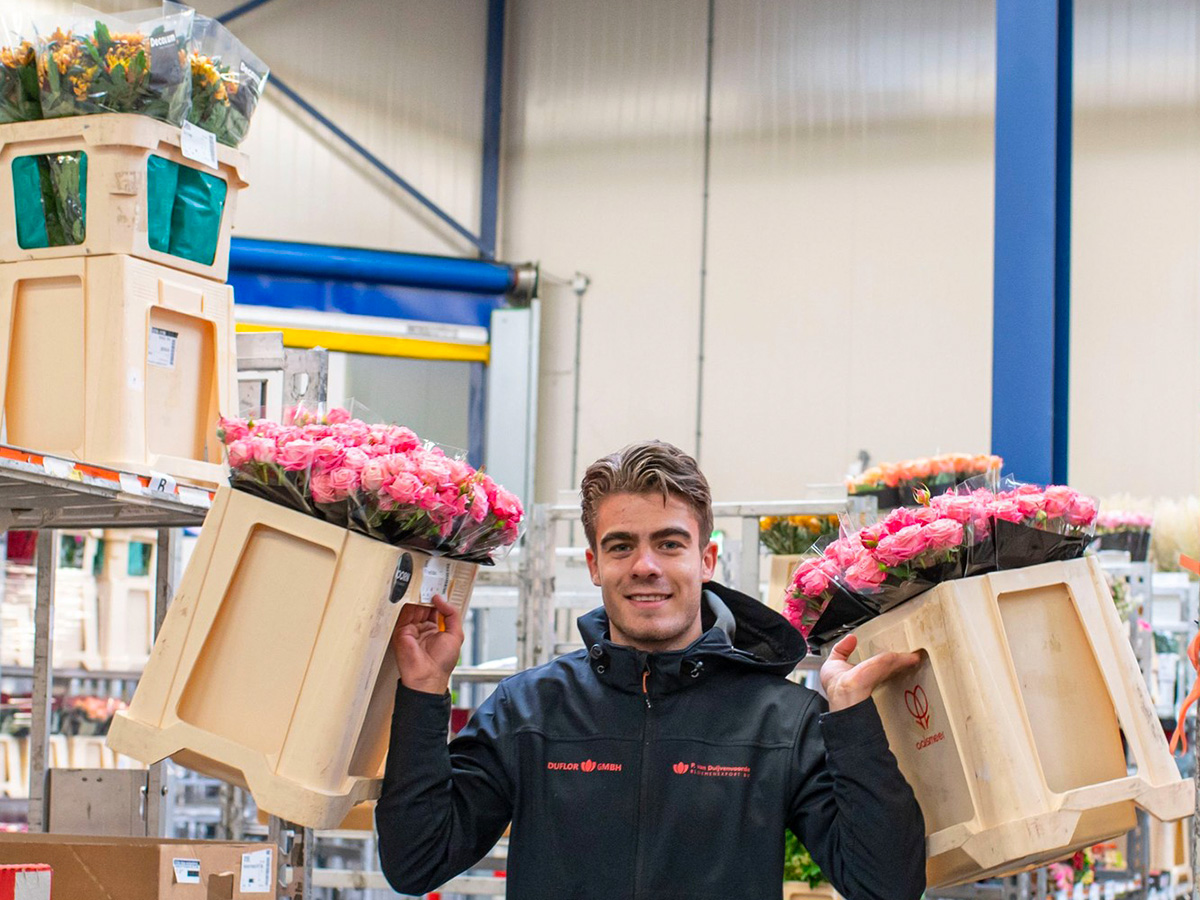
How Long Can a Flower Be Stored?
How long a flower can be kept in cold storage depends on the type of flower and the temperature of the cold storage. Generally, flowers can be kept in cold storage for up to two weeks. That means two weeks for the entire floral chain, from grower to florist.
The big trick is here to maintain the same cold conditions during the whole trip. We call this the 'cold chain'. If one piece of the cold chain fails, the damage is done and the chance of recovery is not very high. That is why over the years a lot of effort has been put into monitoring the temperature of flower shipments by means of temp tags in the boxes.
So, cold storage is good. Most producers of facilities that provide this will tell you that for cut flowers a temperature of 2-8 degrees Celsius is ideal. But first: this is quite a big margin. Second: it is a bit more complicated than that because there are also cut flowers that do not like to chill.
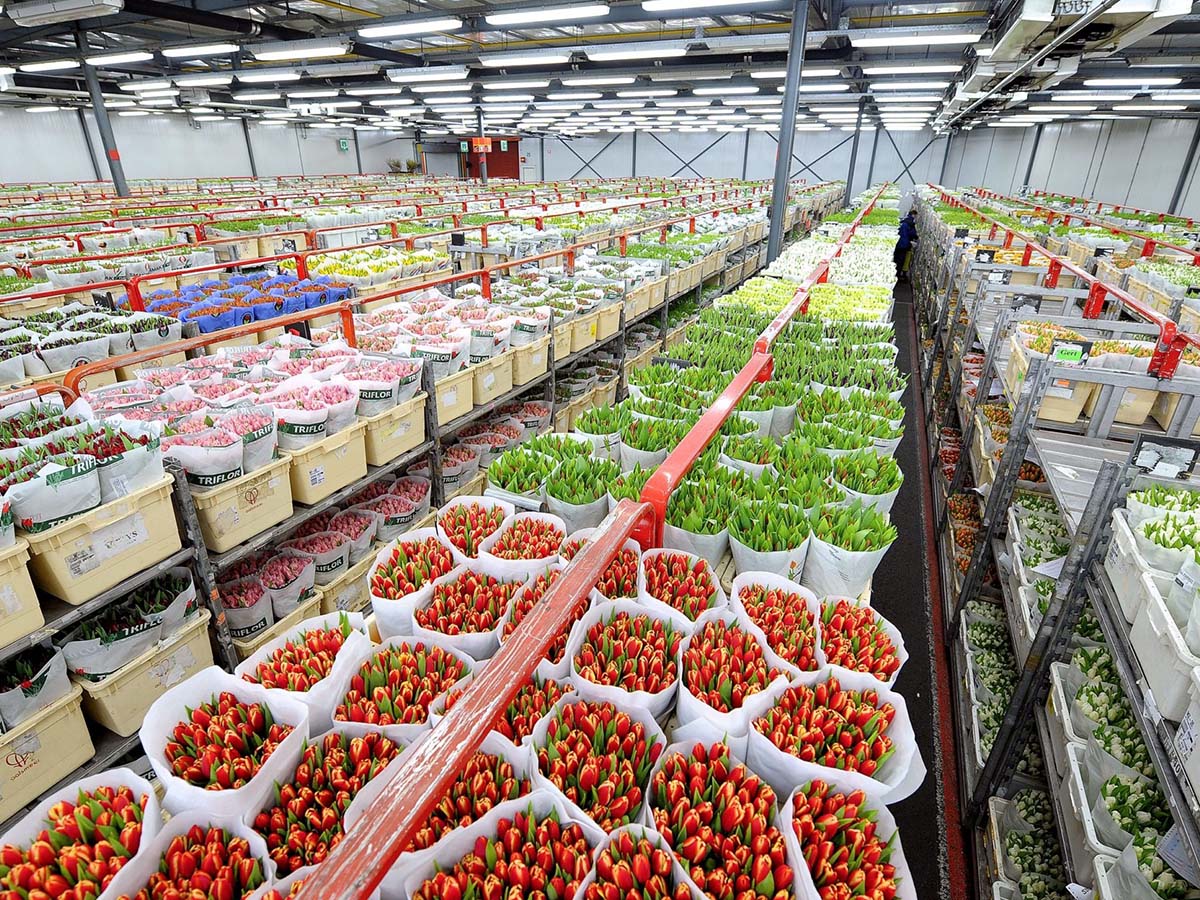
Cold Storage: Yes!
There are degrees when it comes to cold-colder-coldest. Some flowers can really be kept at temperatures approaching the freezing point. Others are a bit more moderate, but still like a nice cold wintery temperature to get some sleep before it's showtime.
Most bulb flowers like it very cold. Tulips, lilies, iris, hyacinths, nerines, and narcissus can be kept at temperatures that go down as 1 degree Celsius. An exception is the calla that prefers a bit less cold.
Like the calla, most flowers can be kept at regular temperatures, which is around 4-7 degrees Celsius: These are your roses, chrysanthemums, alstroemerias, gerbera, most foliage, and so on.
A good tip would be to take care of some hydration in your cold storage, because flowers dehydrate, even if they are semi-asleep. A bit of moist (not wet!) air does flowers well. Saturated air should be estimated at up to 90-95%. Circulation of air helps to get the balance right here.
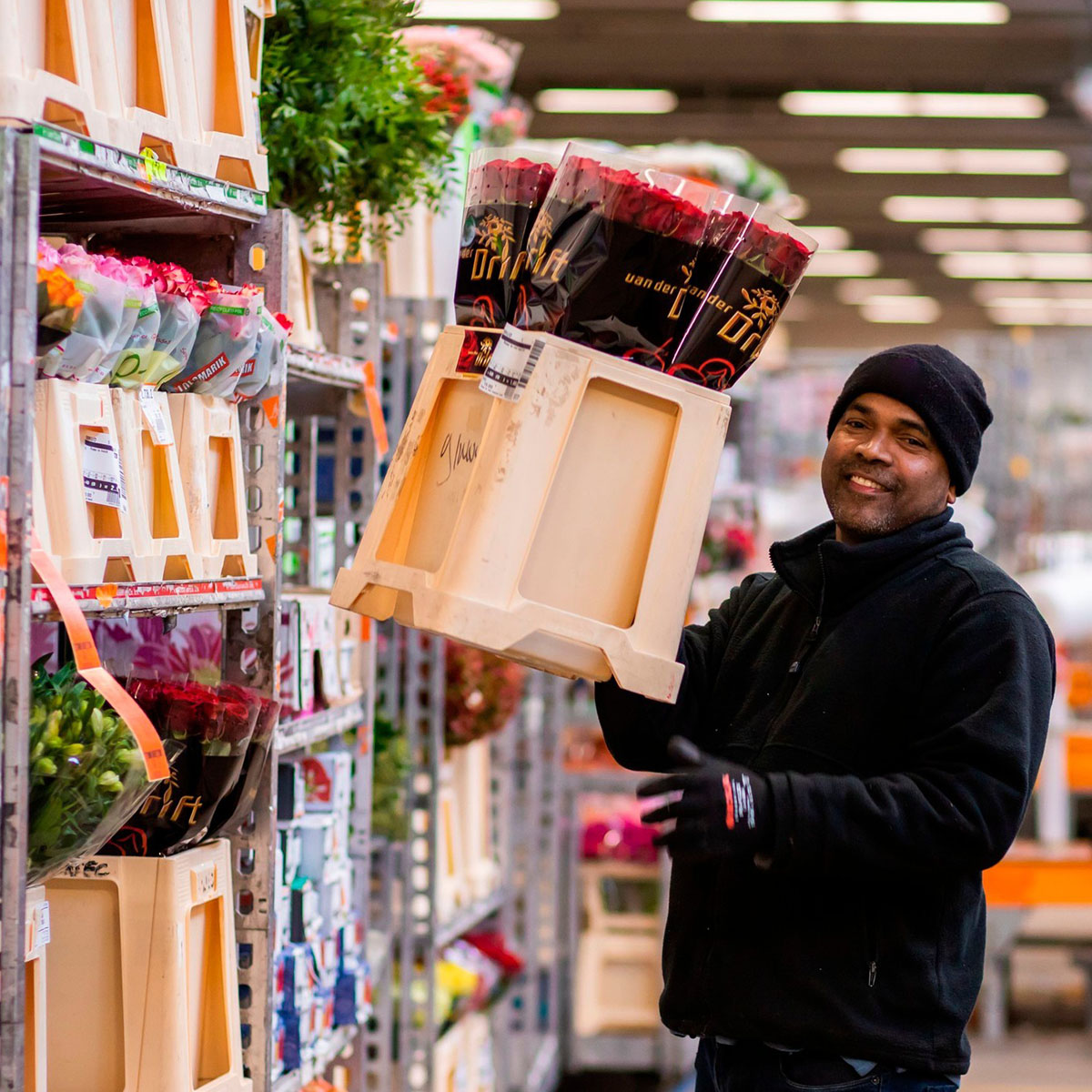
Cold Storage: No!
Some flowers cannot stand the cold. And you know what they say: "If you can't stand the cold, get out of the fridge." These are some of the most popular cut flowers that will not like you anymore when they are left in the cold.
It doesn't need to be tropical, but if you have a warehouse where it's around 13 degrees Celsius, the following flowers will perform at their best.
Anthurium (especially the white ones!), tropical flowers like heliconia, strelitzia, and orchids (although cymbidiums can be kept quite cold) are just fine outside the cold rooms. Summerflowers are a dispute. Some growers, like zinnia and rudbeckia grower Han Fokkink will tell you that cold storage is not necessary at all:
"In the flower auction, and with most exporters, these summer flowers are stored in the cold rooms, whereas they ought to be kept in a non-refrigerated warehouse. They are quite vulnerable and will degrade fast in cold conditions. When I grow them myself, I do not have this problem. I even sell some of my flowers directly to wholesalers."
It's a matter of trusting that you will not always need cold storage. Test it on a small scale first and you will see. It may save some money to leave certain flowers at 13 degrees.
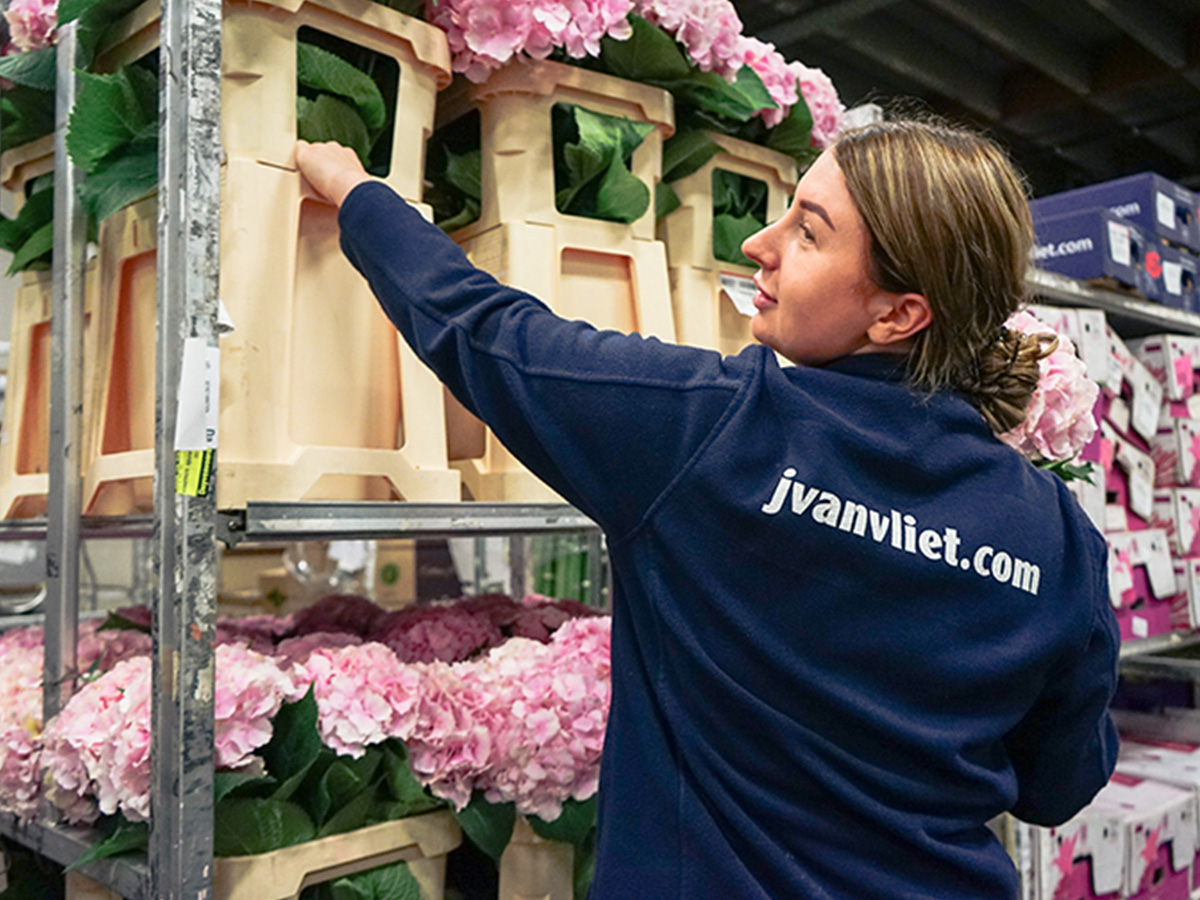
Off Topic, but What the Heck. How About Plants?
By the way, it's a bit off-topic but still interesting to mention: pot plants are never put in cold storage.
Header image: Cold room at FleuraMetz. Photo by @fleurametz_official.

